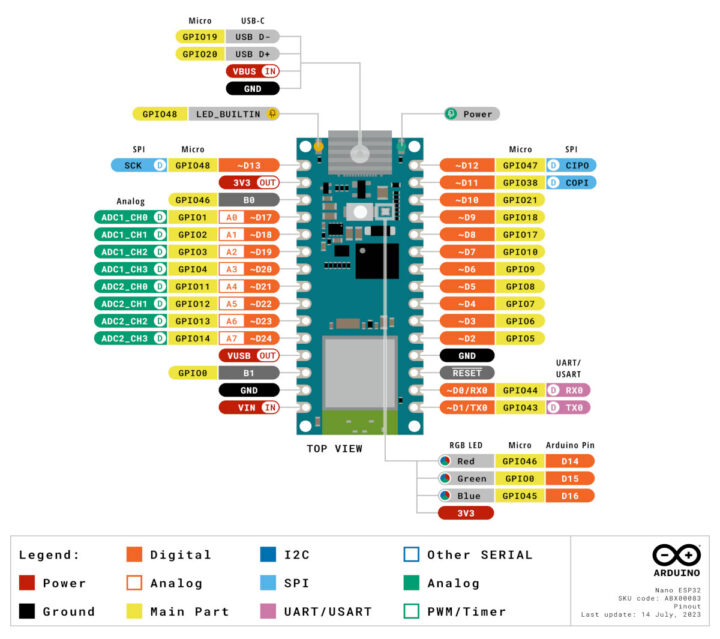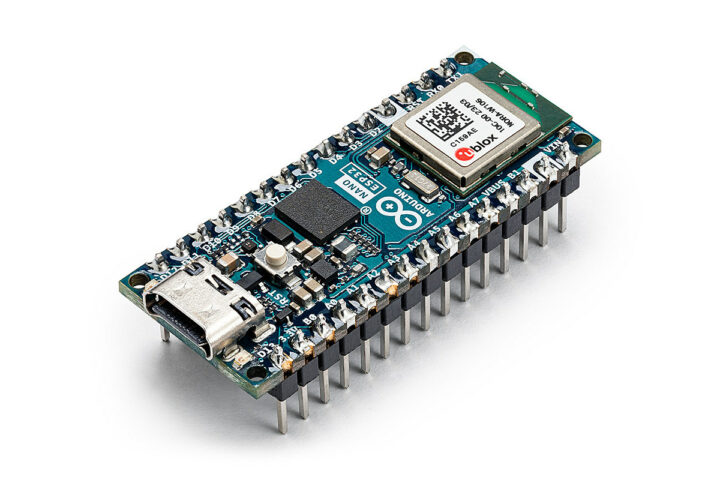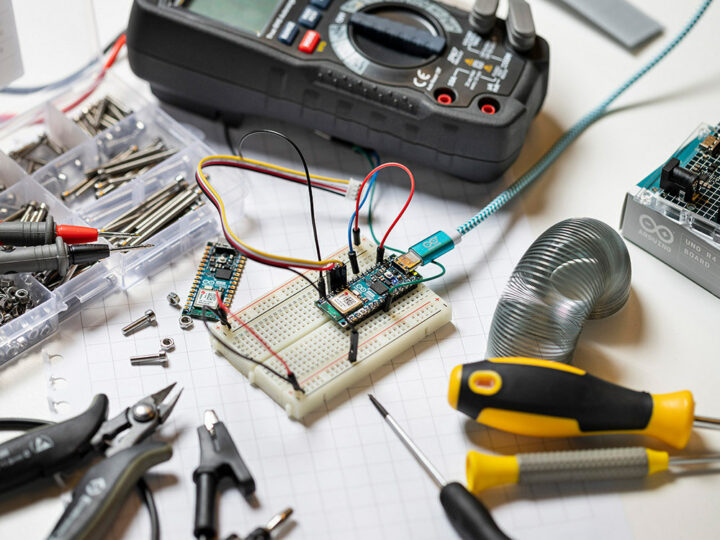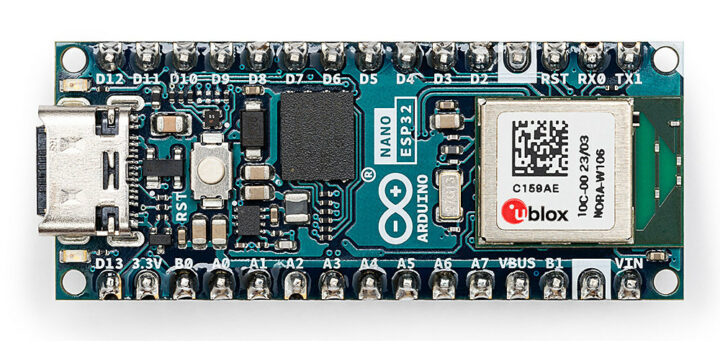The Arduino Nano ESP32 is an ESP32-S3-based WiFi and Bluetooth microcontroller board designed for IoT applications for hobbyists and enterprise use cases. The new Nano board comes with 8 MB PSRAM and 16 MB flash storage and can be programmed with either the Arduino or MicroPython languages.
It’s not the first ESP32 board from Arduino, as the Nano RP2040 Connect pairs a Raspberry Pi RP2040 MCU with an ESP32 module from u-Blox and the just-released Arduino UNO R4 WiFi marries a Renesas RA4M1 Arm Cortex-M33 MCU with an ESP32-S3-MINI-1 module. But the Arduino Nano ESP32 is different since it’s the first ESP32 board from Arduino where the Espressif chip is the only microcontroller onboard and handles both wireless connectivity and GPIOs.
Arduino Nano ESP32 specifications:
- Wireless module – u-Blox NORA-W106-10B with
- MCU – ESP32-S3 dual-core Xtensa LX7 microcontroller @ up to 240 MHz with vector extensions, 512KB SRAM, 384KB ROM, WiFi 4 and Bluetooth 5.0 connectivity
- Memory – 8MB PSRAM
- Embedded PCB antenna
- Dimensions – 14.3 x 10.4 x 1.8 mm
- Storage – 16MB flash
- USB – 1x USB Type-C port for power and programming
- I/Os
- 2x 15-pin expansion headers with 14x GPIOs, 13x LED pins, 5x PWM, 8x analog inputs, 2x UART, 1x I2C, 1x SPI, reset, and power signals (+5V, +3.3V, GND, Vin, AREF, …)
- 3.3V I/O (not 5V tolerant)
- Source current per I/O pin – 40 mA
- Sink current per I/O pin – 28 mA
- Misc – Reset button, and 2x LEDs
- Power Supply
- 5V via USB
- 6-21V via Vin pin on headers
- Dimensions – 45 x 18 mm compatible with the original Arduino Nano
- SKUs – ABX00083 with headers, ABX00092 without headers

The Arduino Nano ESP32 supports both MicroPython and Arduino programming languages, and the company provides a MicroPython 101 course using the Arduino Lab for MicroPython. The board also easily integrates into the Arduino IoT Cloud. More technical details and instructions to get started can be found in the documentation.
The Arduino Nano ESP32 is now available for $20 and $21 on the company’s store without or with headers respectively. As usual, Arduino also has pricing for the European market for 18 Euros and 19 Euros respectively.
Update: This post was initially published on July 17, and updated with further details once the documentation and product pages were made available.

Jean-Luc started CNX Software in 2010 as a part-time endeavor, before quitting his job as a software engineering manager, and starting to write daily news, and reviews full time later in 2011.
Support CNX Software! Donate via cryptocurrencies, become a Patron on Patreon, or purchase goods on Amazon or Aliexpress







